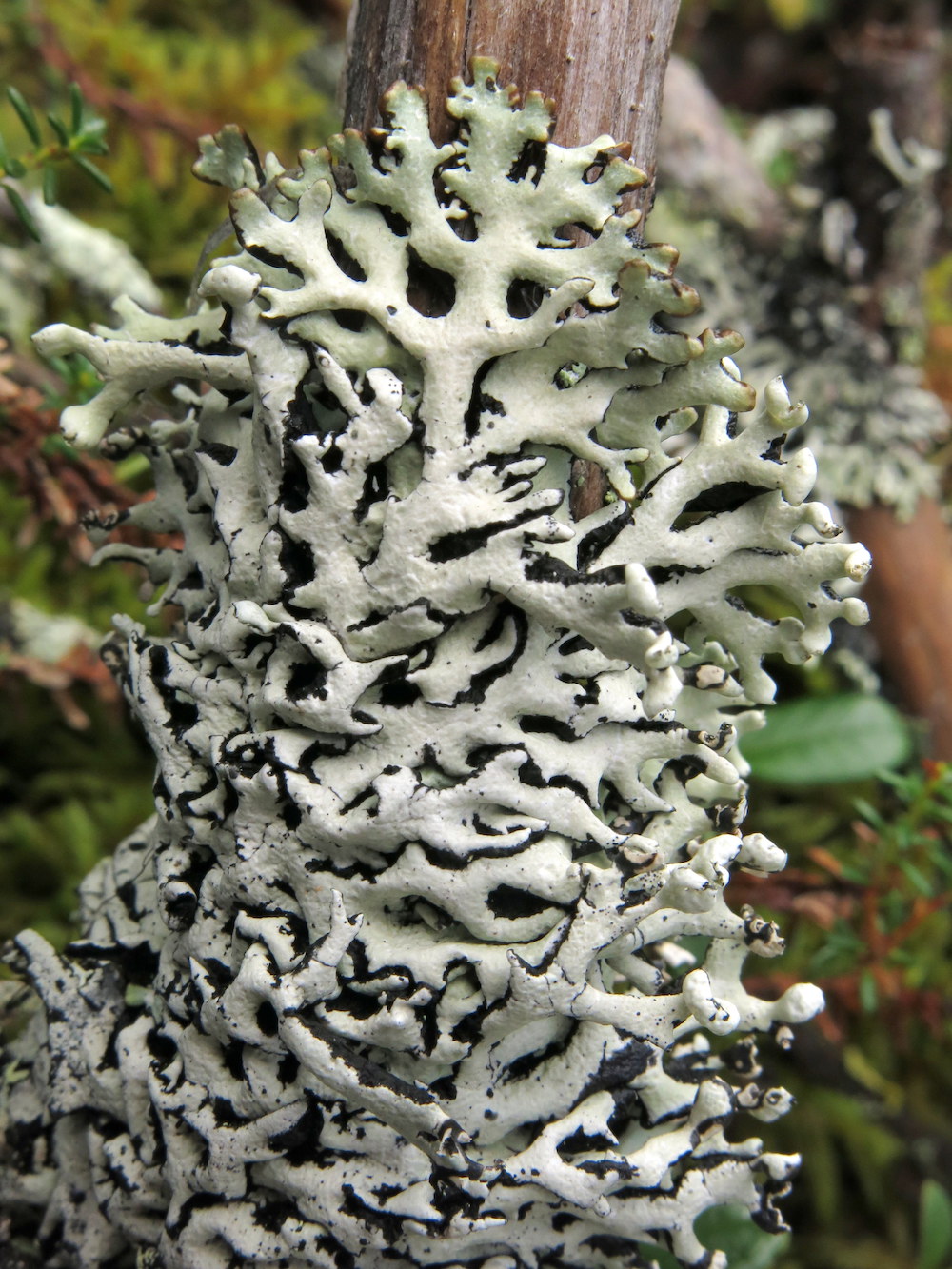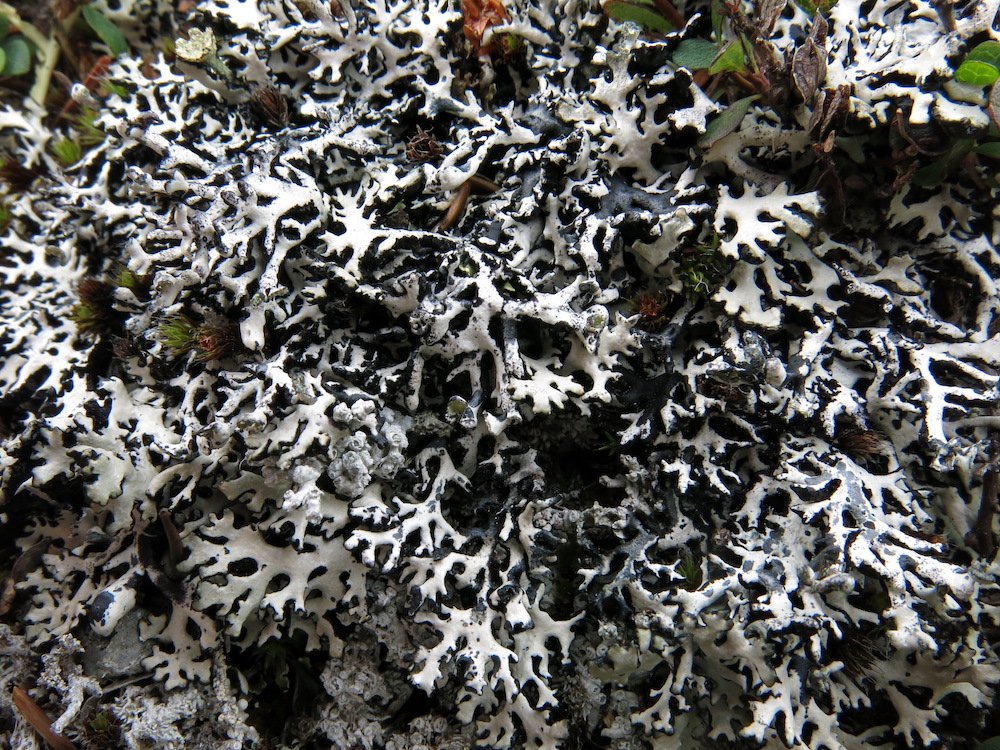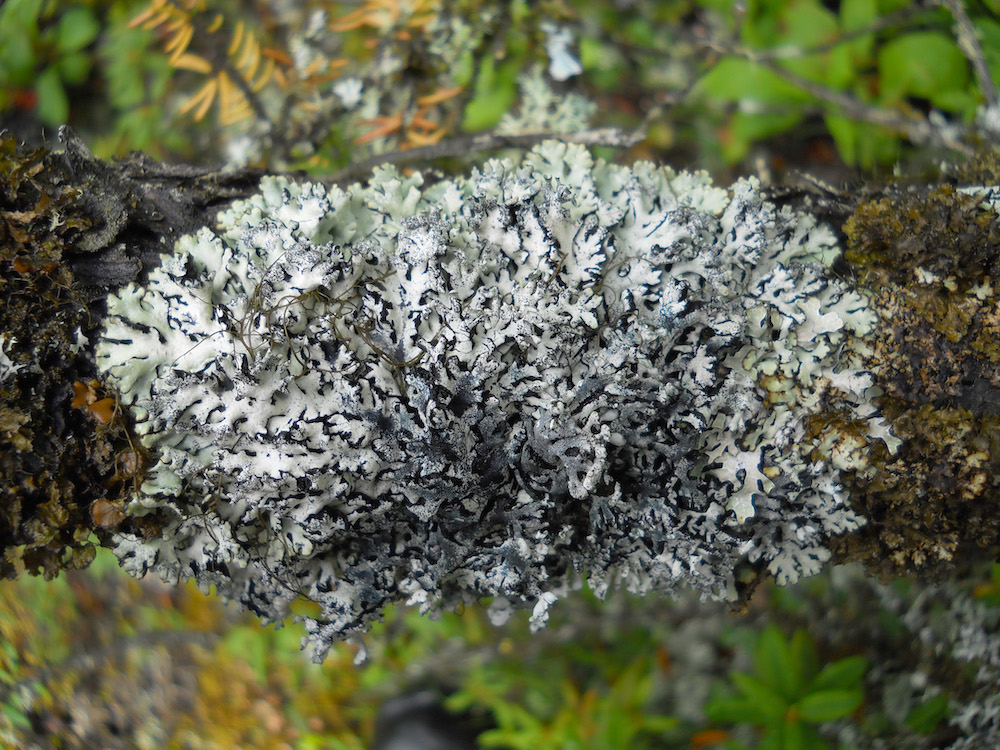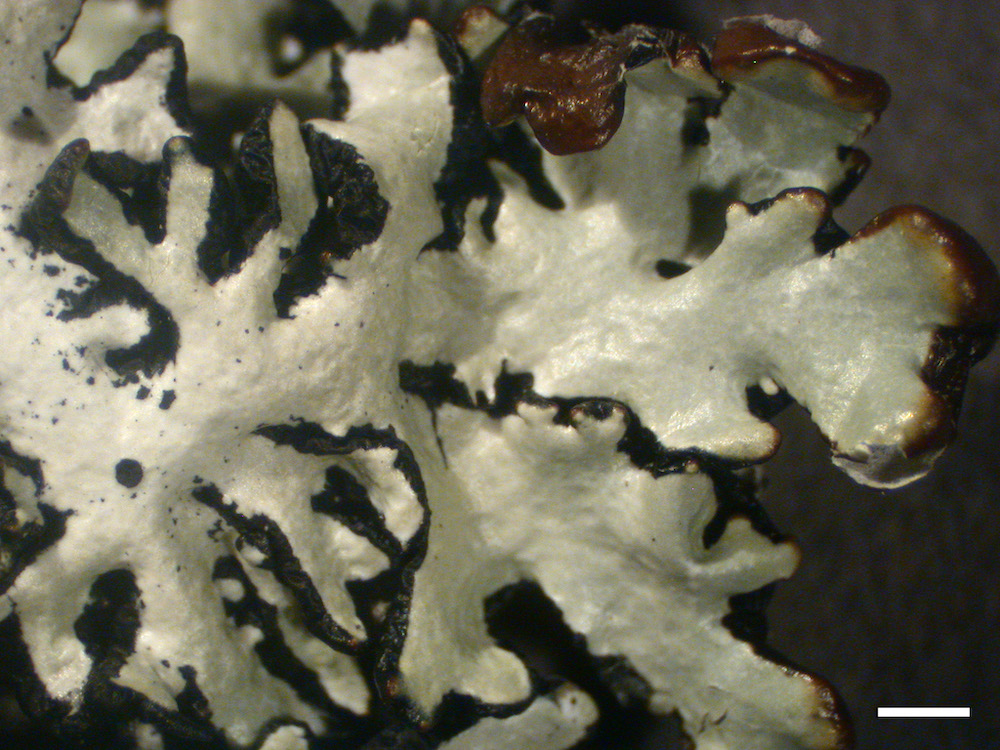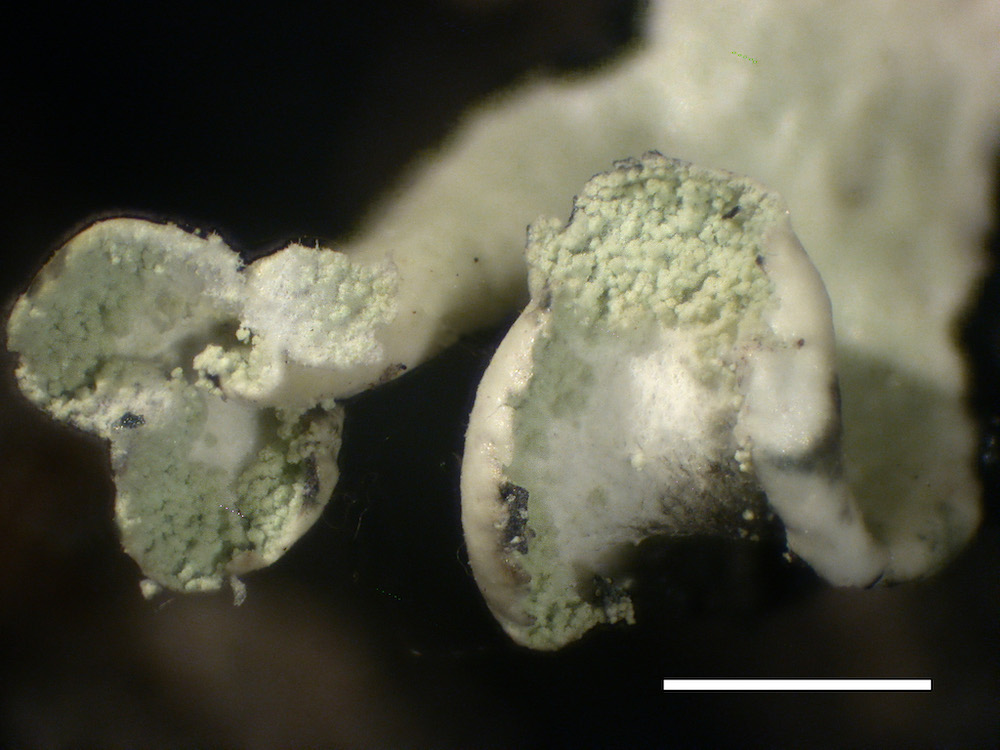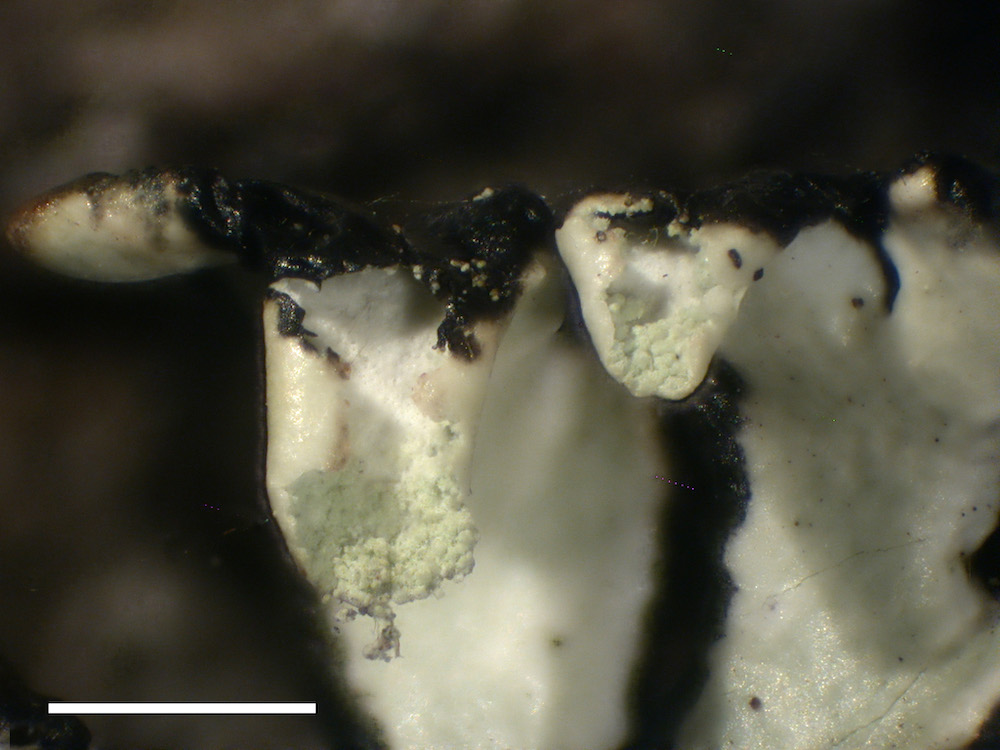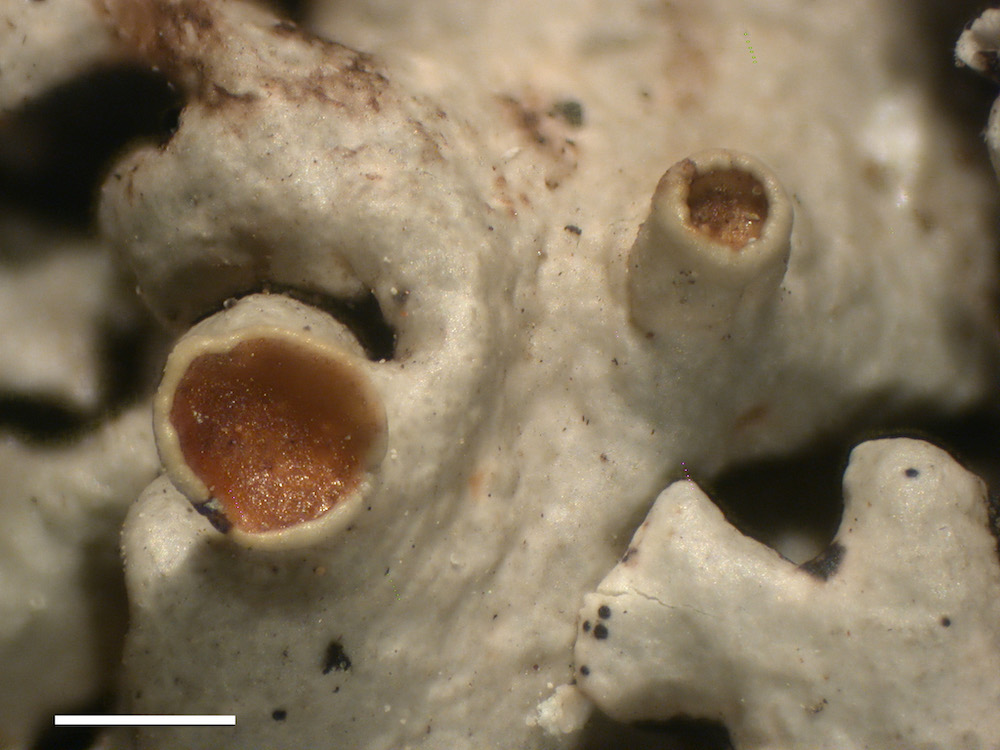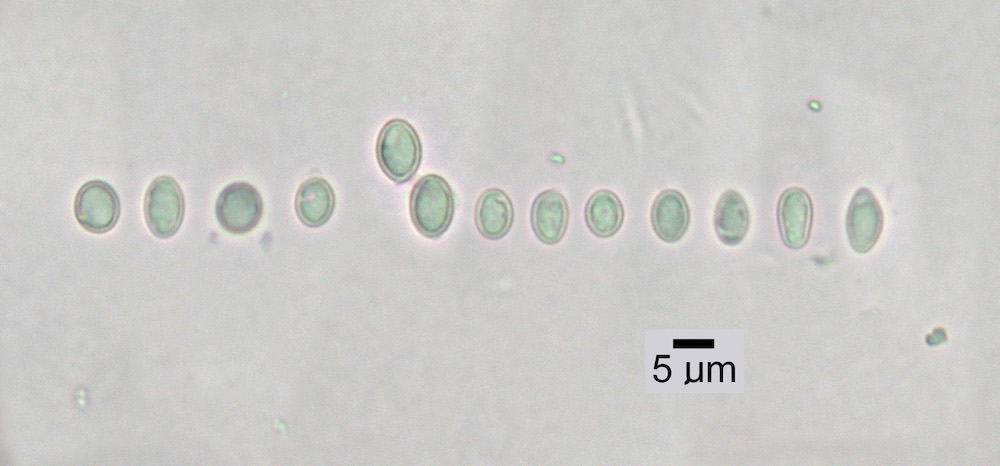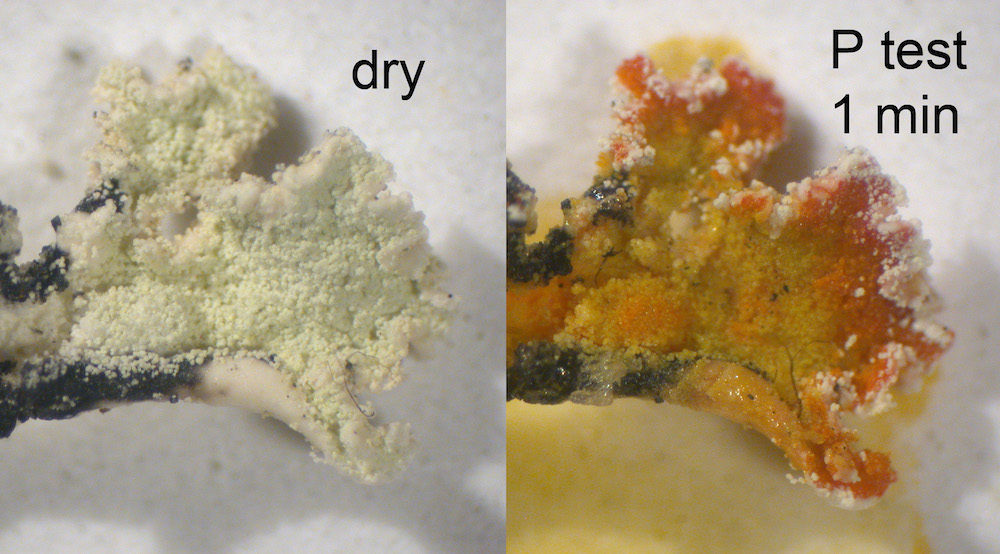Click on Characteristic name for explanation. Click on image for larger version.
Overview
| Synopsis:
| Lip shaped soralia beneath the tips of imbricate lobes, lobes imperforate except for incipient soralia, medulla K+ slow reddish brown, KC+ orange red, P+ orange red.
|
| Distribution:
| China: many provinces (Wei 1991); Asia, Africa, N Am, S Am, Australia, all territories of Russia except the steppes and desert zone and Talish (Rass. 1971); Europe, N Am, E Africa, Himalaya (Purvis et al. 1992); Madeira (Tavares 1952); Ukraine (Kondratyuk 1996); Turkey (John 1996); temperate west Himalayas (Awasthi 1988). India: Himachal Pradesh; Jammu and Kashmir, Kukernag; Pahalgam to Baisaran; Sonamarg; Uttar Pradesh, Uttarkashi district; etc. (Awasthi 1984), Argentina (Calvelo & Liberatore 2002). Kazakhstan (Wagner & Spribille 2005, unpublished list).
|
| Habitat:
| widespread, nonspecific
|
| Range:
| Central and Southern California, Southern Rocky Mountains, Eastern North America, Arctic, Subarctic, Alpine, Pacific Northwest Immediate Coast, Northern Rocky Mountains, Pacific Northwest
|
| Other Diagnostics: | Soralizing to black rather than brown. Occasional small esorediate individuals can be recognized by the P+ medulla and imperforate lobe tips.
| | Substrate Notes: | Occurring on virtually any substrate
| | Abundance in North America: | Common
| | Substrate: | Typically
| | Host: | Conifers and hardwoods, bark and wood
| | On Rock: | Rarely
| | On Moss/Detritus/Sod: | Rarely
| | Authority: | (L.) Nyl.
| | References: | Population genetic data in Mattson et al. 2009 (Lichenologist 41:547-556); many papers referencing this species in air pollution work
| | Synonymy: | None
|
|
.JPG)
Habit
|
Chemistry
|
|

K+ reddish brown reaction
1/2
|
.JPG)
.JPG)
.JPG)


